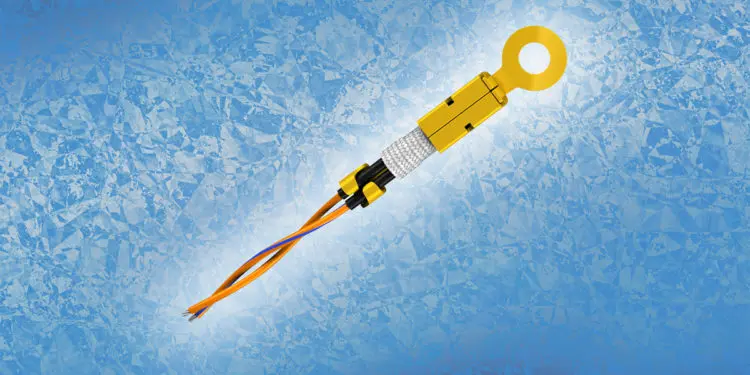TDK Corporation presents the new B58703M1103A* temperature sensor − specially developed for demanding E-mobility applications, which call for high long-term stability. The NTC sensor is designed for a temperature range of -40°C to +150°C, whereby a temporary load of up to 200°C is permitted. At 25°C the rated resistance is 10 kΩ with a B25/100 value of 3625 K and a tolerance of ±1 percent.
The sensor has been subjected to climatic, chemical and mechanical testing according to the service life tests of LV 124 and in doing so has achieved electrical resistance class H3 according to LV 123, which corresponds to 2.5 kV DC. This high and long-term stable electrical strength is required to prevent damage, for example, to control devices throughout the service life of the vehicle.
The connecting cables of the new temperature sensor meet the LV 112-4 standard for electrical cables in motor vehicles and are twisted to improve EMC performance. The cable lengths are 655 mm and 1000 mm as standard. The sensor includes an M4 mounting bracket made from copper alloy for mounting purposes. This choice of material offers excellent thermal coupling and ideal material compatibility with the copper busbar, which prevents contact corrosion.
The field of application of the new sensor is temperature monitoring of busbars, battery modules and connector systems in E-mobility.
Main fields of application
- Temperature monitoring of busbars, battery modules and connector systems in E-mobility applications
Main features and benefits
- Temperature range from -40°C to +150°C
- High electrical strength of 2.5 kV DC according to LV 123 H3 class
- Twisted cables for good EMC performance































